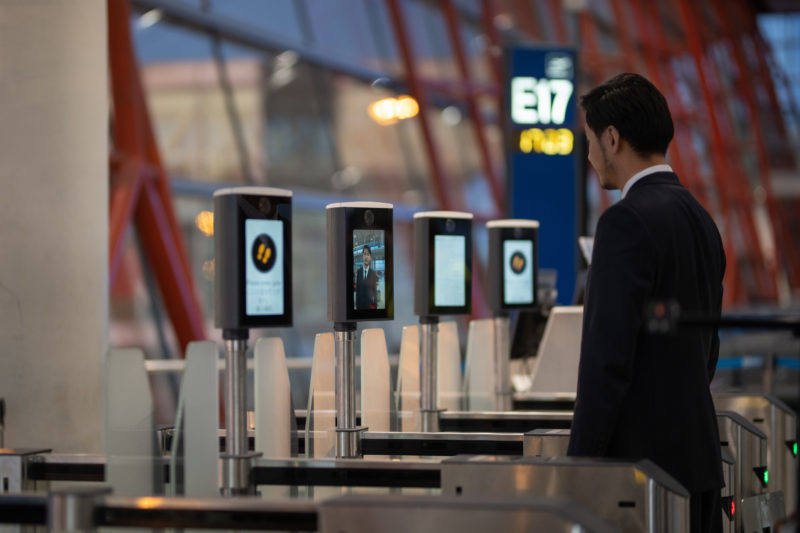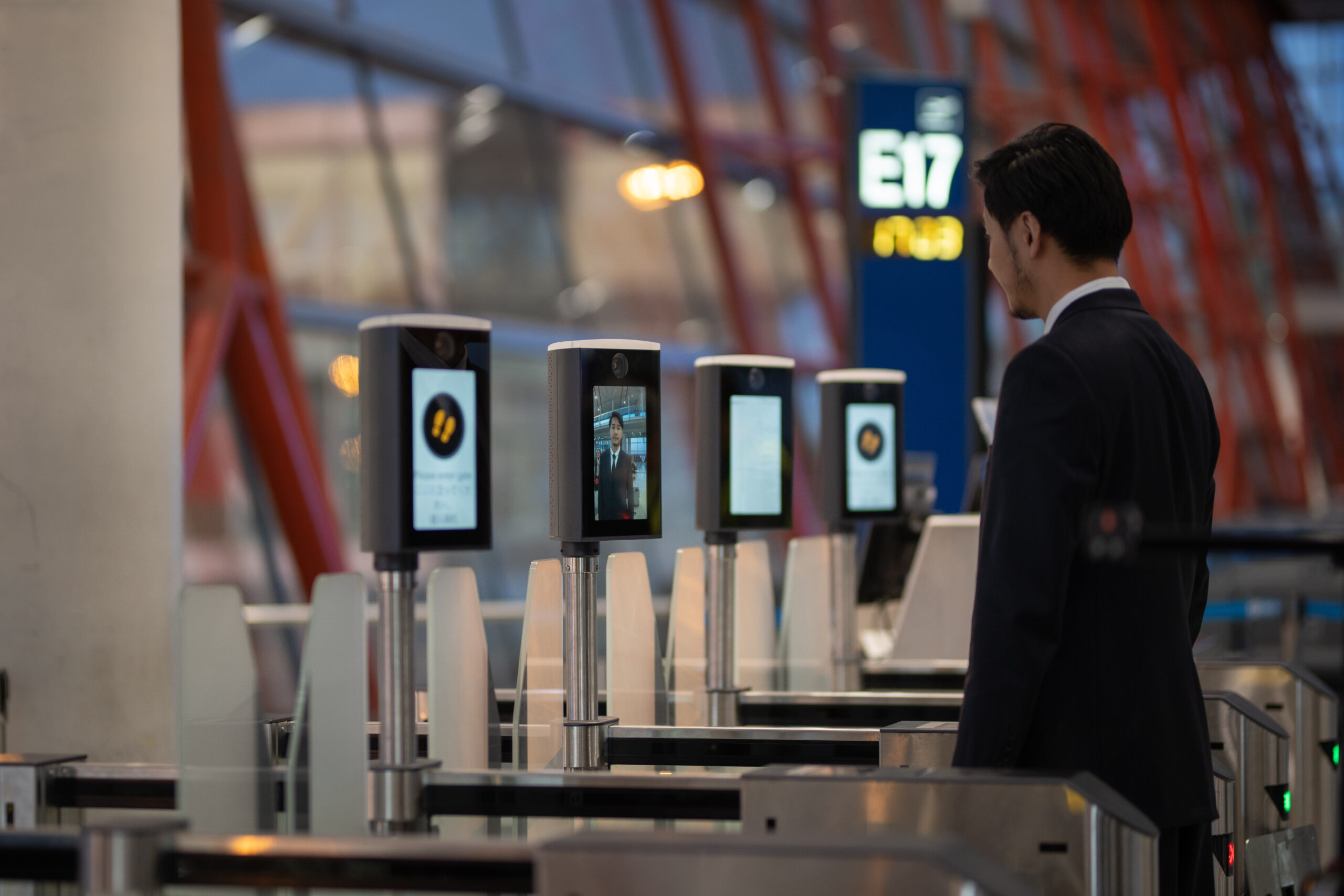Automation, enabled by biometrics and contactless technologies, will be more important than ever in this COVID-19 era. There is growing interest from the market to automate and optimize airport operations, through the use of smart technology, to deliver process and cost efficiencies. Automation enables better social distancing and passenger flow through airports, without compromising processing times.
1. Biometrics and Contactless Technologies
In Beijing, SITA has implemented Smart Path technology; including the use of facial biometrics to deliver a ‘walk-through’ airport experience, passengers can simply use their face as their boarding pass.

Beijing Capital International Airport (BCIA) has completely automated the entire outbound passenger journey; from check-in and bag drop through to immigration, security and finally boarding. Passengers only need to enrol once during check-in, they can then experience a seamless journey through the airport; removing the need to show a passport or boarding pass. Improved processing efficiency means shorter queuing time and more social distancing for all passengers. An added benefit during the COVID-19 era is that the process removes the need to touch any airport equipment, reducing the risk of infection.
2. Minding the Distance - Evolving Airport Operations in Response to COVID-19
The COVID-19 outbreak is rapidly changing the processes and flows of airport operations. In addition to weathering the economic storm, caused by the pandemic, the main goals of airport stakeholders are to adapt to changing regulations, designed to protect the health and welfare of staff and travellers. Flexibility and agility are the standard qualities required of any operating system to help airports manage.
Passenger flow management technologies such as SITA’s AMS (Airport Management Solution) provide real-time passenger monitoring and actionable insights, for airports to know and manage passenger movement throughout the airport. It will become a necessity to pro-actively manage crowd density and social distancing during daily operations, as well as longer-term planning.
Utilizing technology, like SITA's Information Display System, airports can send passengers personalized mobile messages such as
“your gate was thoroughly disinfected 11 minutes ago”
“your row is now boarding at gate 5”
This added level of communication can place passengers at ease throughout their entire airport journey.
3. Development of a Self-Sovereign Identity for Air Travel
In the coming years we expect that the development of a, universally accepted, self-sovereign digital identity will replace the traditional passport, further reducing contact points and ensuring seamless travel.
This digital identity will allow travel across borders with any airline or airport, all the while ensuring that passengers remain in full control of their identities. Self-sovereign identity (SSI) gives travellers control over how their personal data is shared and used. It adds a layer of security and flexibility, allowing the identity holder only to reveal the data required for any given transaction or interaction.

The potential benefits of using SSIs include: lower financial transaction costs, protecting people’s personal information, limiting opportunity for cybercrime and simplifying identity challenges in various fields, including travel, healthcare, banking, IoT and voter fraud.
4. Health ETA and APP – The key to Accelerating Travel During COVID-19 and Beyond
Health Electronic Travel Authorization (ETA) allows governments to receive the information they need to help keep their country healthy. Travellers are required to provide information on their health status and are informed of that assessment’s outcome in advance of travel, this will give travellers confidence that they will be allowed to complete their journey before it begins. When they are at their destination travellers can then focus on their trip, knowing that they can be contacted in case of any potential outbreaks or concerns.
For example, Advance Passenger Processing (APP) brings the ability to assess the risk, including health risks, and allow or deny travel at the point of check-in. When coupled with the implementation of a Health ETA service, it enables real-time checks to be performed to confirm that each traveller has completed the required health checks and is eligible to travel. For travellers, it provides greater safety and surety of travel and a smoother border processing experience.
5. The Potential of Blockchain for Aviation Industry-Wide Savings
Blockchain is a technology that promises tremendous opportunity for streamlining the sharing and recording of information, across the air transport industry securely. These improvements through blockchain technology have the potential to deliver substantial industry savings. Process improvements ultimately can improve and with them so will the customer experience.
For instance, the Maintenance, Repair and Overhaul (MRO) Blockchain Alliance was launched in early 2020; designed to explore blockchain’s use to digitally track and record aircraft parts and securely share common data, to drive new efficiencies in air travel. PwC estimates that the use of blockchain could increase aerospace industry revenue by as much as 4% or $40 billion, while cutting MRO costs globally by around 5% or $3.5 billion. Savings will be derived from secure document storage, ensuring confidentiality and data privacy, improved insights on repair time and inventory, automated workflows and more efficient record reconciliation.
Custom processes are another area where blockchain can benefit. Airports, airlines and governments can share baggage content information to pre-clear bags at arrival, hence avoiding the need to recheck bags in transit. Improving efficiency in this department, and further reducing the chances of baggage mishandling on arrival, is good news for passengers.




